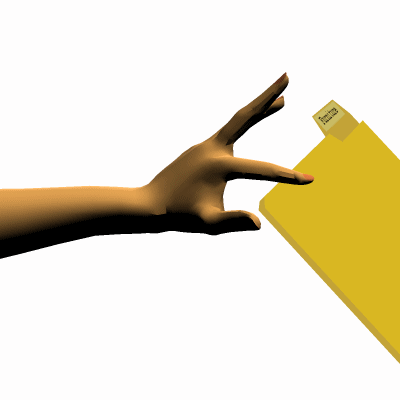Friday, February 12, 2021
The Whorl Hypothesis
Via RCS, an oddity about koala bears.
Koalas seem to be the marsupial equivalent of monkeys. (Kangaroos would be the equivalent of humans.)
The newly found oddity: Koala fingerprints and human fingerprints are much more similar than chimp and human fingerprints.
The article speculates in Darwin style:
 Run your fingertip across the edge of cardboard, or a non-rounded edge on a desk. You can hear a 'syllable' formed as the crosswise and parallel parts of the fingerprint pass over the edge. The 'syllable' is different for each finger, and it would also be different between people. Each print is essentially a spectrogram of a syllable.
Stridulation. Crickets do it. Some birds do it. Why not primates and marsupials?
Run your fingertip across the edge of cardboard, or a non-rounded edge on a desk. You can hear a 'syllable' formed as the crosswise and parallel parts of the fingerprint pass over the edge. The 'syllable' is different for each finger, and it would also be different between people. Each print is essentially a spectrogram of a syllable.
Stridulation. Crickets do it. Some birds do it. Why not primates and marsupials?
While the modern human experience with fingerprints centers around crime and identification, the mesmerizing whorls on our fingers (and chimpanzees' and gorillas') did not evolve for that purpose. One theory is that fingerprints function as 'tactile enhancers', amplifying vibrations to boost the sense of touch. Another is that fingerprints boost an individual's ability to grasp objects.A tactile enhancer for vibration seems unlikely. To feel a vibration you need to hold the finger steady, and the ridges wouldn't make any difference. In fact the people who need to sense vibrations most precisely (old-fashioned safecrackers) often sanded down their fingerprints to get closer contact. A tactile enhancer for sensing the shape of a surface by sliding the fingertip makes sense. Braille. The small dots would create vibrations as they cross each ridge. Neither of those sensory modes would provide a purpose for the unique pattern of each individual. When you think of sending instead of receiving, the unique pattern makes more sense. Try this:
 Run your fingertip across the edge of cardboard, or a non-rounded edge on a desk. You can hear a 'syllable' formed as the crosswise and parallel parts of the fingerprint pass over the edge. The 'syllable' is different for each finger, and it would also be different between people. Each print is essentially a spectrogram of a syllable.
Stridulation. Crickets do it. Some birds do it. Why not primates and marsupials?
Run your fingertip across the edge of cardboard, or a non-rounded edge on a desk. You can hear a 'syllable' formed as the crosswise and parallel parts of the fingerprint pass over the edge. The 'syllable' is different for each finger, and it would also be different between people. Each print is essentially a spectrogram of a syllable.
Stridulation. Crickets do it. Some birds do it. Why not primates and marsupials?
